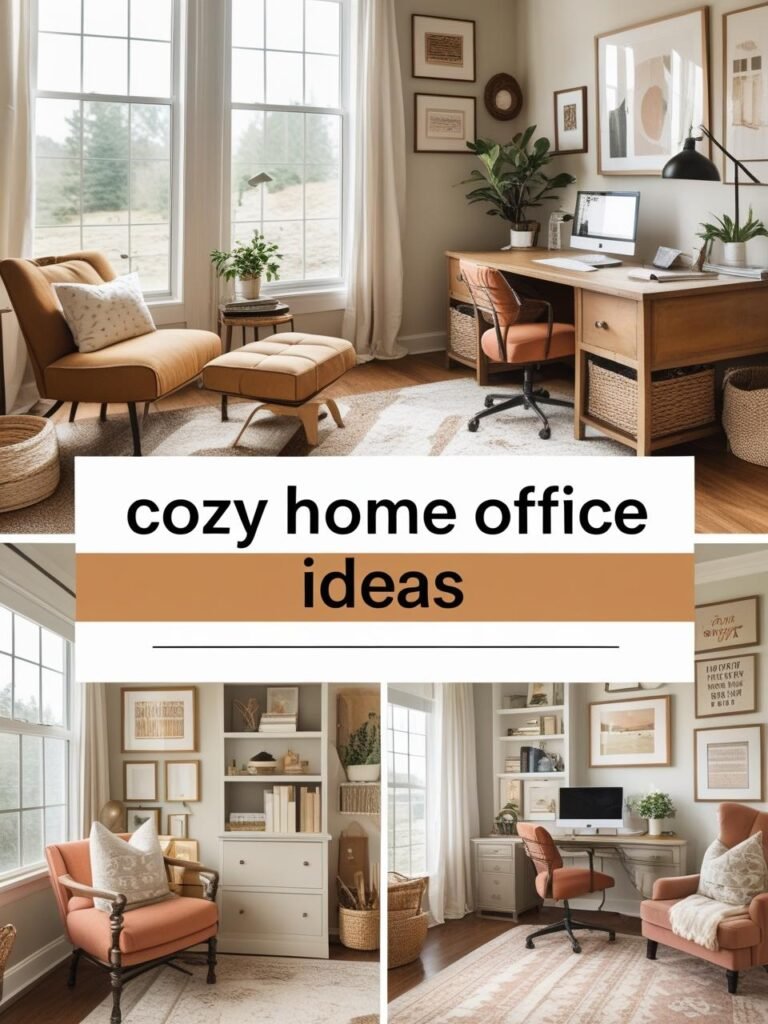Home Office Ideas: Stylish and Productive Workspaces You’ll Love
Home Office Ideas
Working from home has shifted from being a luxury to a necessity for many professionals. Whether you’re a freelancer, remote employee, or small business owner, having a dedicated home office can boost productivity, enhance focus, and make workdays more enjoyable. The right setup blends comfort, style, and functionality — tailored to your personal needs and space.
In this guide, we’ll explore practical and inspiring home office ideas you can adapt for your home, from small-space solutions to design styles that keep you motivated.
1. Choosing the Perfect Location for Your Home Office
The first step in designing your home office is finding the right spot. If you have a spare room, that’s ideal. But if you live in a smaller space, you can still create a dedicated work zone by using corners, alcoves, or even underutilized areas in the living room.
Tips for selecting a location:
- Position your desk near a window to take advantage of natural light.
- Choose a quieter part of your home to minimize distractions.
- If possible, use a room with a door for privacy during calls.
For inspiration on how to style compact spaces, check out these small bedroom hacks — the space-saving principles can easily be applied to your home office design.

2. Invest in Ergonomic Furniture
Comfort and posture are essential when you’re working long hours. An ergonomic setup helps prevent strain and supports your health.
Furniture essentials:
- Ergonomic chair with lumbar support and adjustable height.
- Desk at the right height for typing without strain.
- Optional standing desk to alternate between sitting and standing.
If you love natural textures, consider blending your work area with design trends like those in earthy bedroom ideas — warm wood finishes and calming tones work beautifully in a home office.
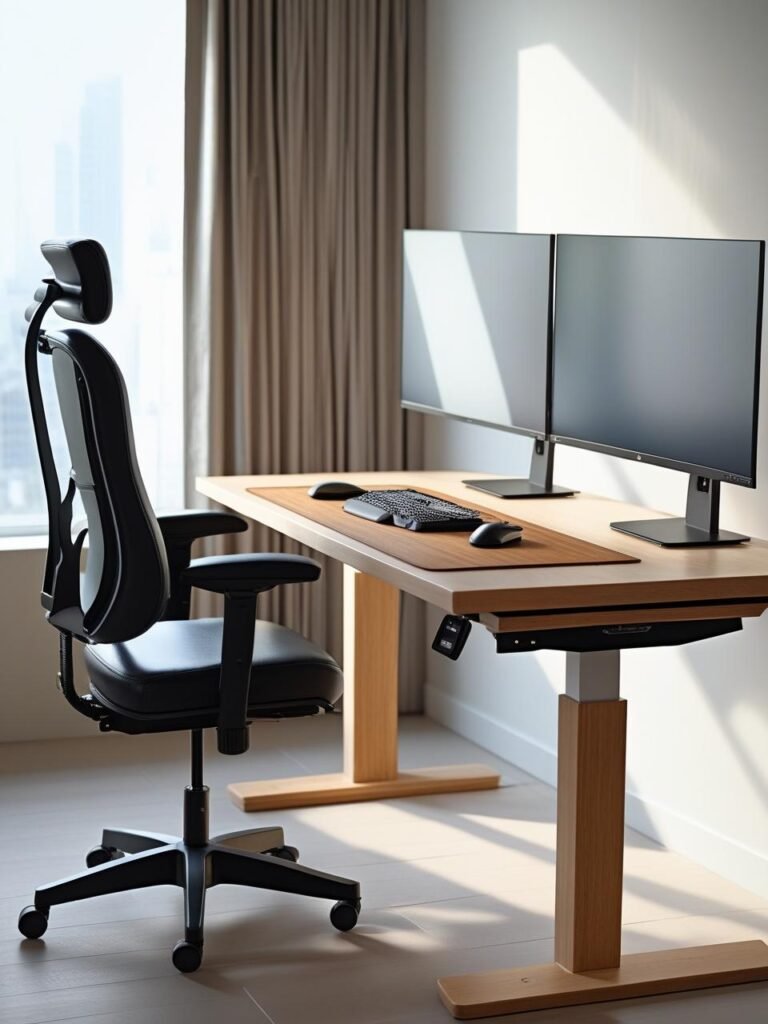
3. Lighting That Boosts Productivity
Good lighting improves both your mood and performance. Poor lighting can cause eye strain, while bright, well-positioned light keeps you alert.
Lighting tips:
- Use natural daylight as much as possible.
- Add a desk lamp with adjustable brightness.
- Choose warm ambient lighting for a cozy yet focused atmosphere.
Much like designing a warm bedroom, layering different types of light — natural, task, and accent — creates a balanced environment.

4. Declutter and Organize Your Workspace
Clutter can sap your focus and energy. A clean, organized workspace helps you think clearly and stay productive.
Organization ideas:
- Use floating shelves to keep essentials within reach.
- Hide cables using under-desk organizers.
- Store non-essential items in cabinets or boxes.
If you enjoy neat, functional design, you might find inspiration from kitchen organization ideas, where every tool has its place — the same principle works for a tidy home office.
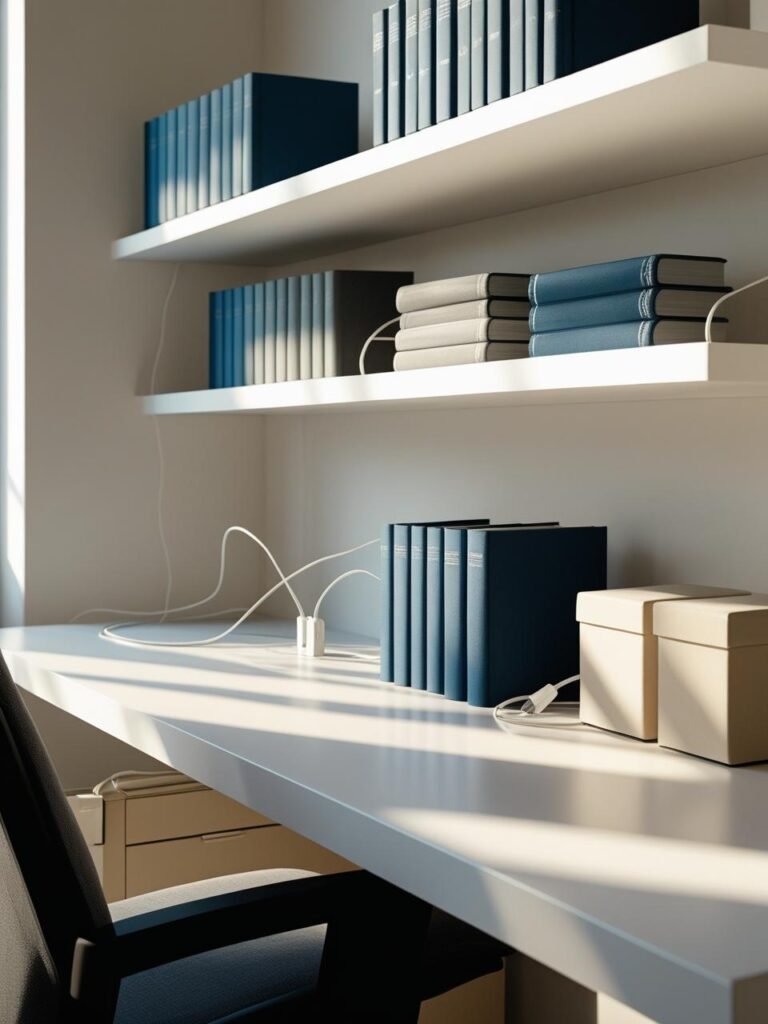
5. Personalize with Style and Color
One of the perks of a home office is that it can reflect your personality. Unlike a traditional corporate setup, you can choose colors, artwork, and décor that inspire you.
Styling ideas:
- Add framed prints or motivational quotes.
- Choose a color palette that matches your vibe — green for focus, blue for calm, yellow for creativity.
- Incorporate indoor plants for freshness and better air quality.
For bold and unique inspiration, take cues from boho living room ideas — layered textures, vibrant patterns, and personal mementos make the space warm and inviting.
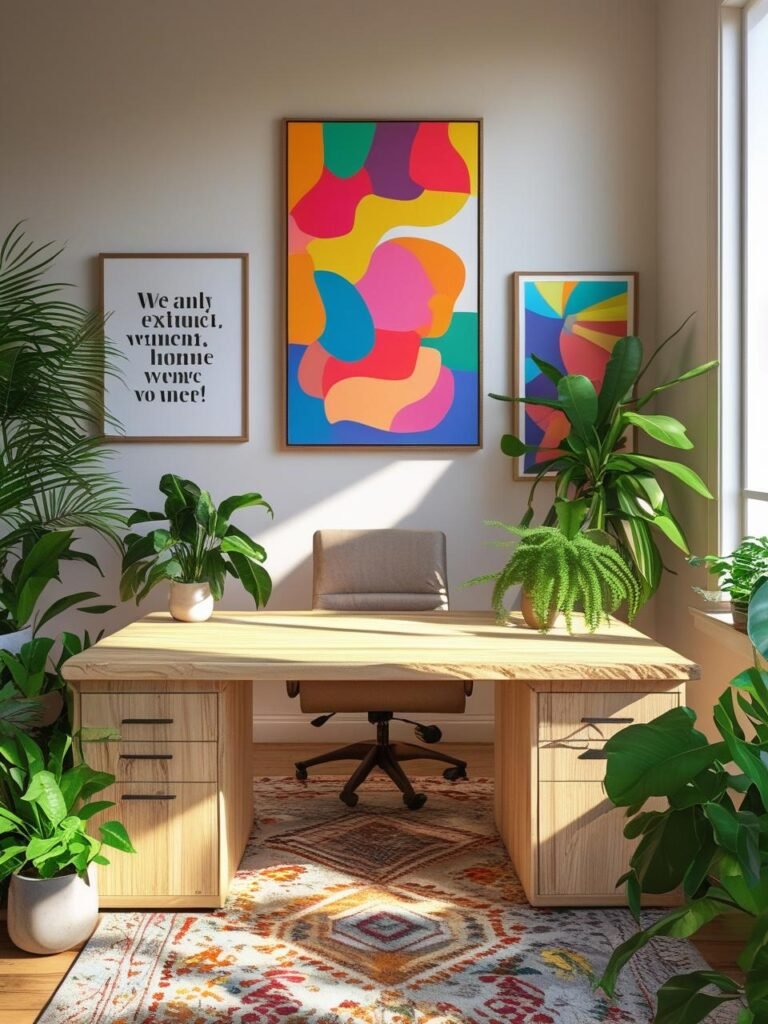
6. Incorporate Smart Storage Solutions
Even the most stylish workspace needs good storage to remain functional. Without it, paperwork and office supplies can quickly take over.
Storage options:
- Vertical shelving units for books and documents.
- Under-desk drawers to hide away small items.
- Multi-purpose furniture like benches with hidden storage.
The concept of maximizing vertical space is also used in stylish shelf décor — it’s a clever way to keep things accessible without cluttering your desk.

7. Upgrade Your Technology
A well-functioning home office needs more than furniture — your tech setup matters. Laggy devices or poor audio during calls can harm your productivity.
Essential tech checklist:
- Reliable high-speed internet.
- Good quality webcam and microphone for virtual meetings.
- Surge protectors to safeguard devices.
- Dual monitors if your work involves multitasking.

8. Add Soundproofing for Focus
Noise can be a major distraction. Whether you’re dealing with street sounds or household chatter, soundproofing can help you focus.
Ideas to reduce noise:
- Use heavy curtains and rugs to absorb sound.
- Install acoustic wall panels.
- Wear noise-canceling headphones during deep work sessions.
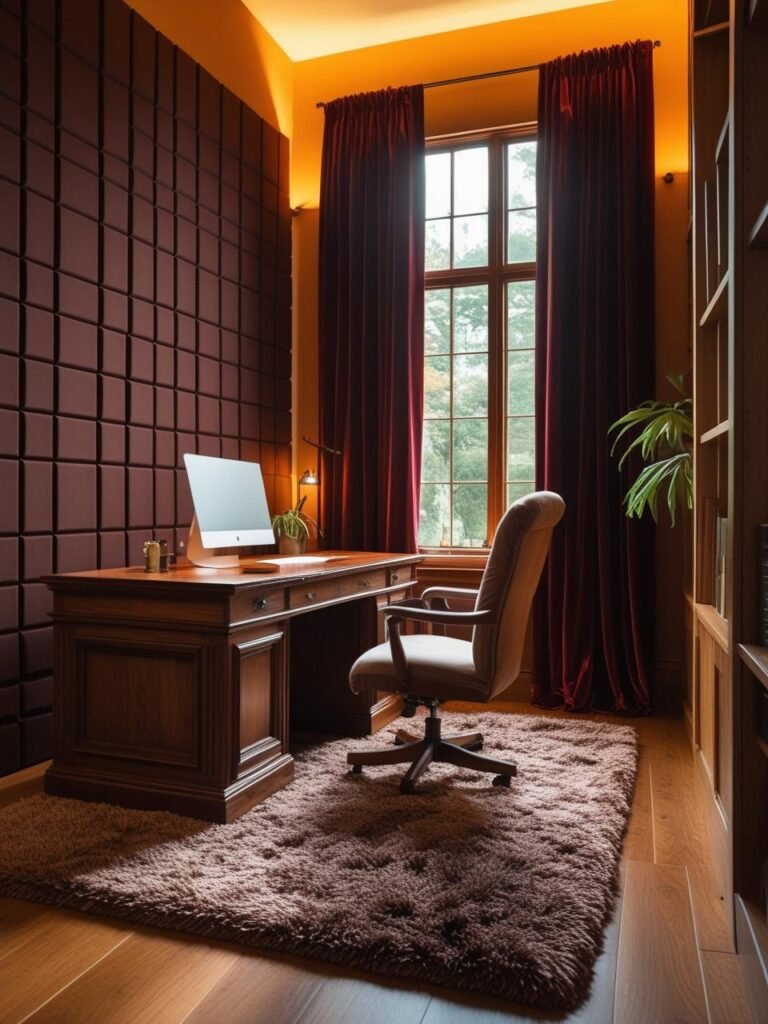
9. Maintain a Healthy Work Environment
Your home office should not only be productive but also healthy.
Wellness tips:
- Keep plants to boost air quality.
- Position your screen at eye level to reduce neck strain.
- Take regular breaks for stretching.
- Keep a water bottle at your desk to stay hydrated.
For a soothing, nature-inspired setup, explore cozy earthy bedroom ideas and bring similar textures and tones into your workspace.
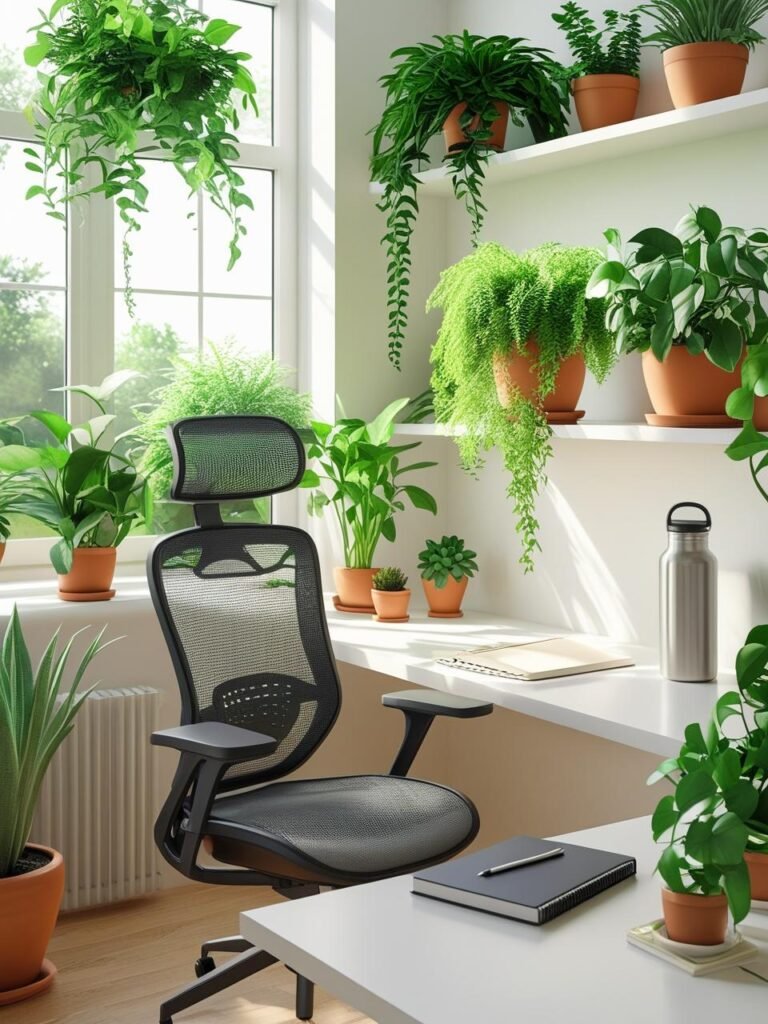
10. Design for Flexibility
Your work needs may change over time — choose furniture and layouts that can adapt.
Flexibility tips:
- Modular furniture that can be rearranged easily.
- Extra power outlets for future gadgets.
- A desk large enough for both computer work and creative projects.
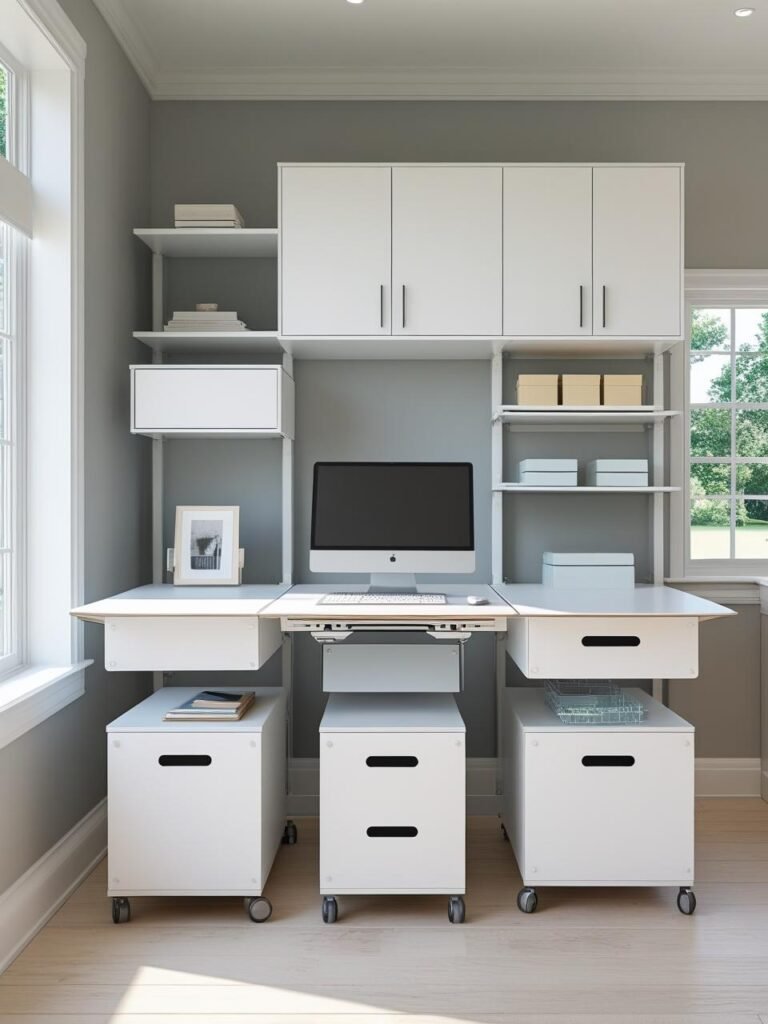
11. Make It Zoom-Ready
With video calls now part of daily work life, your home office backdrop matters. A neat, well-lit background not only looks professional but also boosts confidence during meetings.
Zoom-ready tips:
- Position your camera at eye level.
- Keep the background uncluttered but stylish.
- Use natural light or a ring light for flattering illumination.
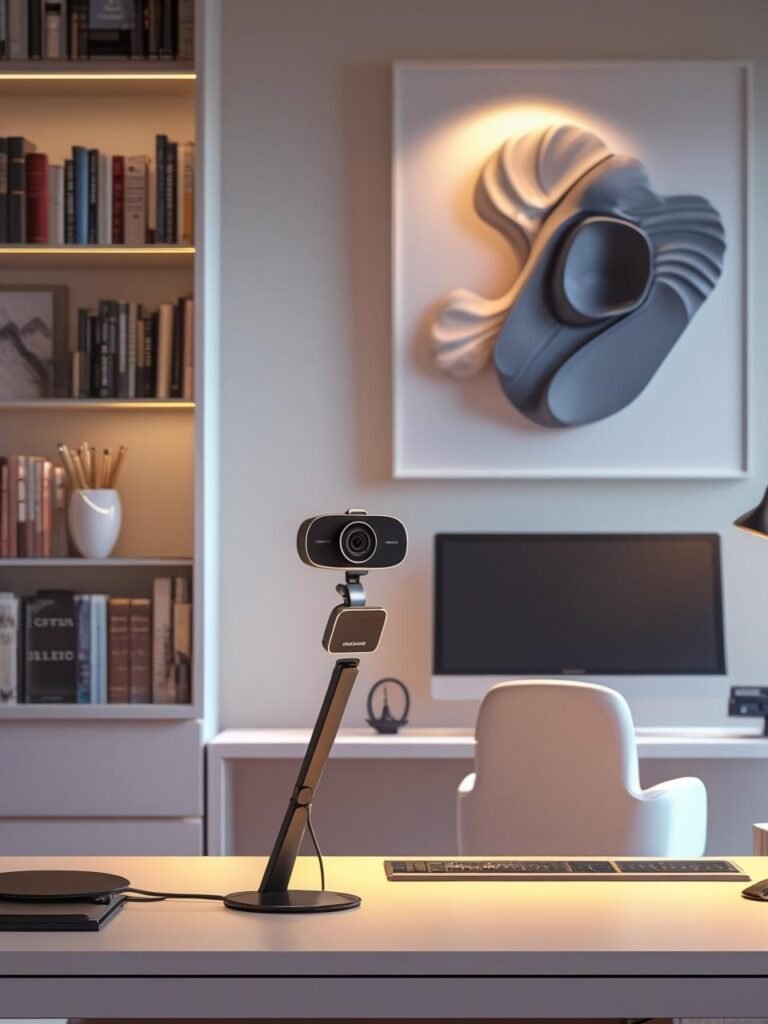
12. Small Space? No Problem
Even if you don’t have a dedicated room, you can create a compact but functional home office. Use multi-purpose furniture or transform unused corners.
Space-saving hacks:
- Fold-out desks that can be hidden when not in use.
- Corner desks that maximize floor space.
- Shelving units that double as room dividers.
The design principles behind mini kitchen ideas work just as well for small home offices — smart, compact, and functional.

Final Thoughts
A thoughtfully designed home office can transform your work-from-home experience. By choosing the right location, investing in ergonomic furniture, organizing your space, and adding personal style, you can create a workspace that inspires both productivity and comfort.
Whether you’re working in a dedicated room or a small apartment corner, these home office ideas prove that a well-planned space can make all the difference. The key is to balance functionality with style — so your office works hard for you while still feeling like a natural part of your home.

